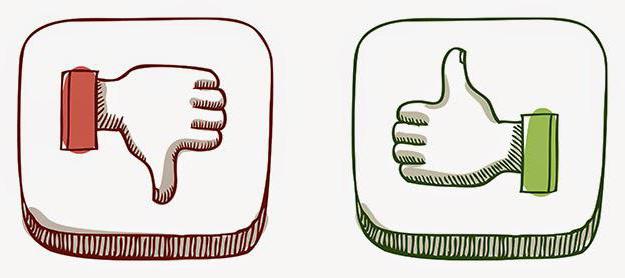Fundamentals of financial knowledge are required for a person all his life. For orientation in the complex issues of our time, already in the eighth grade, types of economic systems are studied. The table helps to put knowledge on the shelves and remember the material.
Definition of an economic system
The phrase "economic system" has several meanings.
- An adopted and functioning scheme of principles for the production of goods, their subsequent distribution and exchange, and consumption by users.
- Systematization of economic life.
- The type of arrangement of economic life in society, which determines the distribution of missing resources.
Consumer and producer seek opposite goals. Consumer - to the satisfaction of requests with minimal cost. Manufacturer - to profit while reducing costs.
The main types of systems
It is customary to distinguish three main types of economic systems:
1) traditional;
2) market;
3) teamwork.

Increasingly, they began to highlight the fourth type - mixed. It also includes the table "Types of economic systems." Grade 8 is the time when children get acquainted with this information. The table presents the characteristics of each type, differing from each other in answers to the main questions of economic production: what to produce, for whom and how.
Traditional type
The name itself speaks of the selection criteria: the manufacture of goods is based on tradition. Accepted in society, the transmitted skills of production are at the heart of the economic system. Human social roles are inherited, attempts to change are suppressed and arise extremely rarely. Production technologies are limited, and the goods and services produced are not changed. Innovations are not welcome, as they encroach on the undermining of the established way of life.

Advantages of the system: stability, quality of goods, predictability of development. Its shortcomings: denial of progress, movement towards stagnation, defenselessness against external factors.
In the twenty-first century, underdeveloped countries are at this stage of economic development.
Market type
When moving to the industrial level of social progress, a market system is formed. It opens up space for answers to economic inquiries. What, for whom and how to manufacture, is decided by the manufacturer, focusing on prices and demand for goods. Own risk, rather than a traditional solution, is the basis of management.

Advantages of the system: the desire for progress, freedom of activity, personal responsibility and interest in making a profit, pricing structure. Its shortcomings: uneven development (downturns and ups), the likelihood of unemployment, risk, the denial of public interests, the elimination of social guarantees.
In most parts of the world, a market system was established in the twentieth century.
Team type
When the state assumes the right to make decisions on major economic issues, there is a transition to the command type. Each production structure receives a special directive regarding its business activities. The initiative is not welcome, it is being suppressed. State ownership of the means of production does not allow a quick response to the changing needs of members of society.

Advantages of the system: stability, social guarantees, predictability at the central government level, efficiency in the redistribution of resources, high moral motives for work.Its shortcomings: the responsibility of the central government for drawing up plans, the disinterest of workers in the results of labor activity, the shortage of certain goods, tight control and accounting.
The system became widespread in the twentieth century, classic examples of manifestation are Germany in the thirties and the USSR in the era of the functioning of socialism.
Mixed type
An attempt to take advantage of the market and command systems and give birth to something new without flaws led to the formation of a mixed look. Comparing the market and command types of economic systems, the table presents the advantages of each of them. The regulation of the economy by the state is harmoniously combined with the freedom of producers in resolving major economic issues. Entrepreneurs have a responsibility to meet customer needs. The state is called upon to carry out social, tax and antitrust policy to grow the economy and improve the lives of the inhabitants of the country.

State functions:
- price management;
- creation of conditions for the production of public goods;
- antitrust activity;
- legislative activity;
- protection of the most powerless and vulnerable segments of the population;
- macroeconomic control.
Comparison tables
Clearly shows a comparison of the types of economic systems table. Let's try to imagine possible structures for comparing the advantages and disadvantages of each type of economy. Consider each option, its pros and cons.

One can imagine the types of economic systems in a different form. The table on social studies allows you to highlight the main criteria for comparison.
| Comparison criteria | Traditional system | Market system | Command system |
| What to produce? | Production problems are solved according to established traditions. | The goods with demand. | Good for the whole society. |
| For whom to produce? | For the consumer of a particular product. | For a variety of consumers | |
| How to produce? | The entrepreneur decides, focusing on making a profit. | Only the central authorities in the state decide. | |
| Who owns the property? | To society. | Private property predominates, state and group are present. | State property predominates. |
| What is the role of the state in the economy? | There is no state yet or its role is to preserve traditions. | The role of the “night watchman” is assigned: the protection of the borders of the state and the rule of law within the country. | All defining issues are resolved at the state level. |
Such criteria define the main types of economic systems. The table can be supplemented with a mixed view. This type of economic system answers the questions presented.
| What to produce? | For whom to produce? | How to produce? | Who owns the property? | What is the role of the state in the economy? |
| Consumer goods and public goods. | Both for specific consumers, and for the whole society. | The state decides on the production of goods, the entrepreneur on the release of goods. | Equality of various species, the predominance of state and private property. | Price regulation; organization and provision of public goods production; fight against monopolies, protection of competition; legislative activities to protect participants in market relations; protection of the poor, protection from the influence of external factors of the entire population; stimulating growth and stabilizing the economy. |
You can draw other lines of comparison. Types of economic system table allows you to explore comprehensively. For ease of perception, it can be rotated from vertical to horizontal position, that is, questions will appear in the first horizontal row, and the names of the types of systems in the first vertical column.
Additional comparison criteria

To thoroughly compare the types of economic systems, the table may contain other evaluation criteria. Usually this material is presented at a higher level of education, which is typical for high school students or for students interested in economics. The following are the main types of economic systems. The table of criteria allows you to compare them taking into account modern realities.
| The volume of socialization of production | Type of budget constraint | Prevalence of ownership |
| The governing principle of management | Incentives to increase labor productivity | Existence of competition |
| The existence of the shadow economy | Pricing Methods | Methods of control of production facilities |
| Economic regulation | Social Security | Payroll |
Answering these questions, we can comprehensively characterize the types of economic systems, the pros and cons of the table will reflect for each type.








